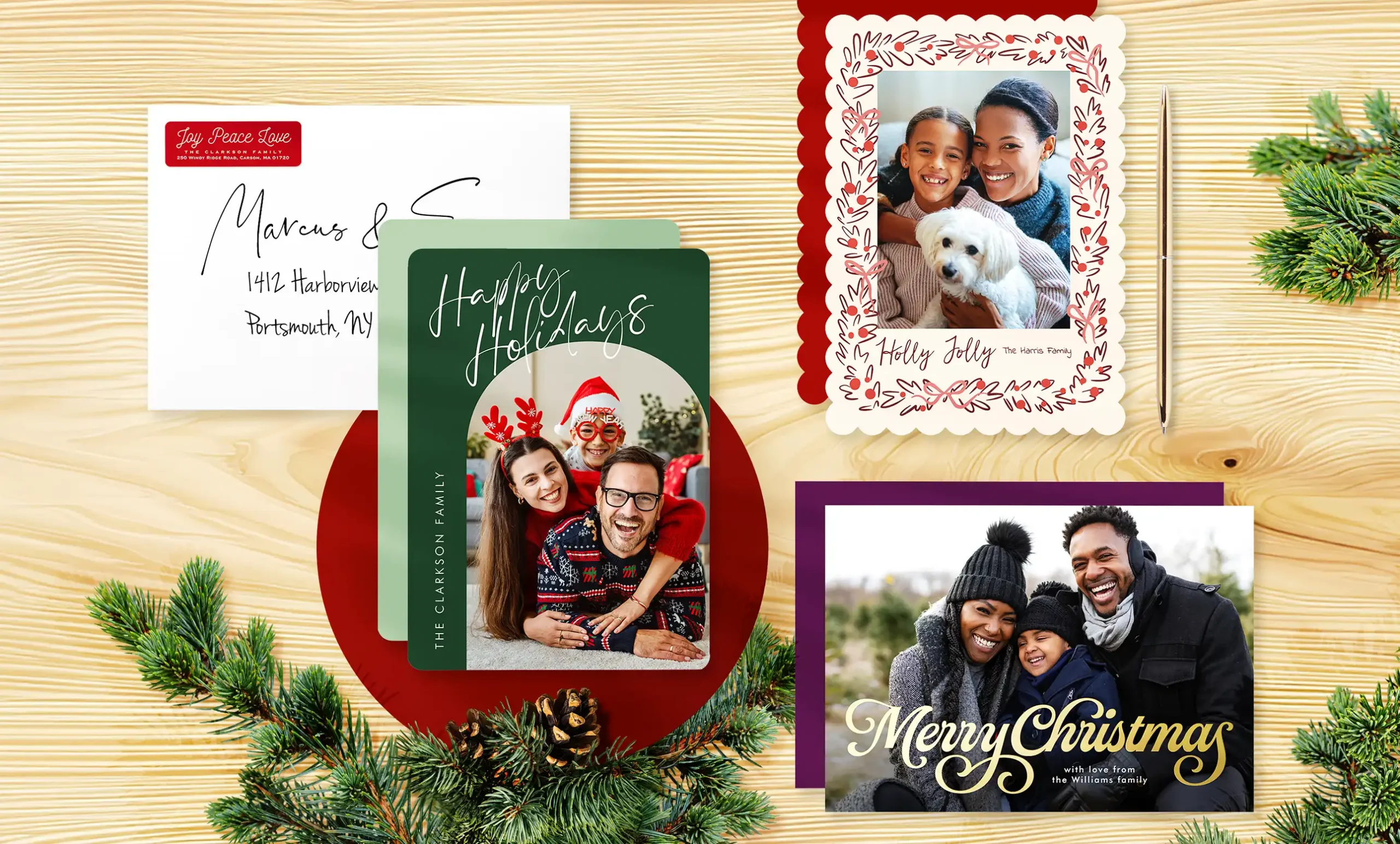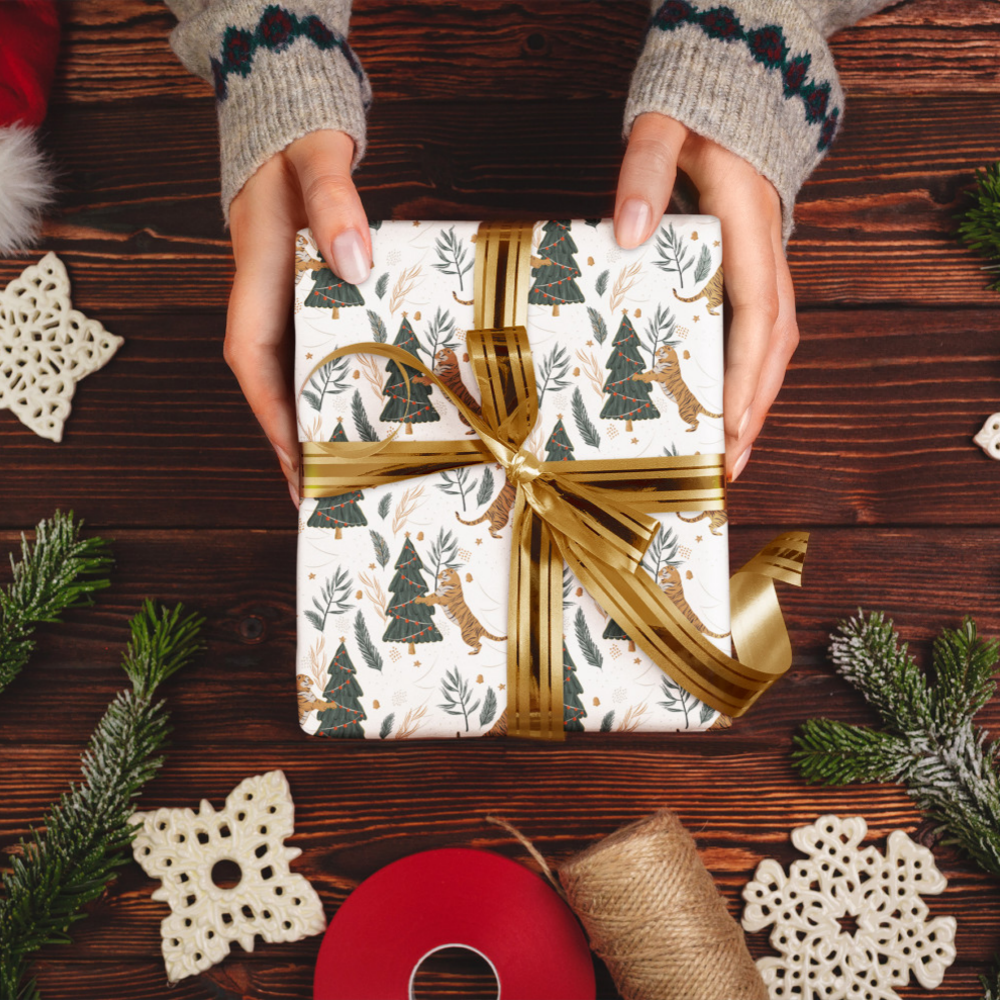This holiday season, between eagerly ripping into wrapping paper and gleefully stuffing your face with turkey, spare a thought for poor old Mother Nature. Christmas, you see, is not her favorite time of year.
A period of joy and love it may be, but Christmas has also become a time of excess, waste, overconsumption, and increased carbon emissions.
It doesn’t have to be like this, however. We can show you how to have an eco-friendly Christmas by making just a few minor changes. If you follow our tips, you can greatly reduce your family’s holiday waste and still have yourself a merry little Christmas—now, and for years to come.
Choose Gifts That Keep on Giving…Back to the Environment
You might have to give in and purchase the kids the energy-guzzling games system they want or the latest must-have plastic toy, but when shopping for adults, you can be a little kinder to the environment. Choose gifts that are not only sustainably manufactured but that encourage the recipients to live more eco-friendly lives. Items like stainless steel water bottles, reusable coffee cups, and canvas tote bags will help to reduce the amount of single-use plastic and paper items that friends and family members consume in years to come.
Bark up the Right Tree
The debate over which is the more eco-friendly option, an artificial Christmas tree or a real, harvested Christmas tree, is one that rages eternally. It’s also particularly complex, so we aren’t going to delve too deep here. Instead, we’ll just say this: if you own an artificial tree, reuse it for as long as possible; if you prefer the real deal, try to get one that was sustainably farmed, as well as organically and locally grown—and don’t forget to recycle it correctly when the time comes.
There are, however, much better options than both. Purchasing a tree growing in a pot is an excellent idea, as this can later be planted outdoors. Alternatively, you could forego the tradition of ‘bringing the outside in’ altogether, and simply decorate a tree, or trees, in your garden.
Though the tree debate is something of a holiday favorite in the media, the issue is less significant than you might think. According to Bert Cregg, Professor of Horticulture and Forestry at the Michigan State University, “both real and artificial Christmas trees have negligible environmental impacts.” So, don’t get too stressed about whether you go for real or faux fir this year.
Make Responsible Travel Plans and Yule Reduce Emissions
A far more significant consideration is your mode of transportation.
The holidays are a time of numerous shopping trips, airport runs, cross-country drives, and long-haul flights. All of this movement results in a massive spike in greenhouse gas emissions.
Obviously, much of this travel is necessary, but it’s important to make the most responsible choices you can. When you’re staying on the ground, try to carpool or make use of public transport. If you’re taking to the skies, choose airlines that have shown a commitment to more sustainable practices, such as: All Nippon Airways, Alaska Airlines, American Airlines, JetBlue, United Airlines, and Air France-KLM. Where possible, you should also book flights on more fuel-efficient aircraft, like the Boeing 787-9.
Fill Your Guests, but Not Your Trash Can
The Christmas period results in a shameful amount of food waste every single year. In an attempt to cater to every possible craving that a family member might have and to really blow the minds of dinner guests, people tend to massively overstock their fridges and shelves.
In order to avoid falling into this trap (again!), it’s important that you have a solid plan in place before you hit the stores. Make a shopping list, and then stick to it!
If you need a little help planning for Christmas dinner itself, check out The Guest-imator, a handy tool created by the Ad Council and the Natural Resources Defense Council as part of their ‘Save the Food’ campaign. This allows you to enter the number of guests you’re expecting, the voracity of their individual appetites (small, average, and big), the types of dishes you plan to serve, and how many leftover meals you would like to have when all is said and done; it then estimates the amount of food that you need to prepare for dinner.
In the event that you still end up with more leftovers than expected, you can always donate to one of the many homeless shelters, food pantries, or charities that accept food donations over the festive season.
If you found your way here after seeing a shocking statistic that made you rethink your holiday habits, we hope we’ve been able to help you plan a more eco-friendly way forward. However, it’s important to remember that environmental awareness is not just for Christmas, it’s for life. With the new year approaching, it’s the perfect time for you to make a resolution and ring in more permanent changes in your life. Mother Nature would appreciate it.

Seamus is a Content Specialist at Zazzle. He is quite happy in the role. So, if you’re following, that makes him a content Content Specialist. Seamus likes to write, read, watch sports, drink good beer/coffee, and spend time with his two beautiful kids. To say that he doesn’t like ketchup is an understatement.





I really love the Guest-imator! I have never seen this before and I ALWAYS struggle with how much to make and I always go with the old “better to have too much than not enough” way of thinking and there is always too much waste! This is perfect! I also like the idea of canvas totes as gifts this year. In CT where I live, they just recently rolled out the single time use plastic bag ban. Reusable totes are a MUST have item for everyone that I know right now.
Hi Kelly! Tote bags are a great gift idea, especially for the reason you mentioned!
Fabric is a beautiful and eco-friendly alternative to paper wrap. Not only can it be ultra luxe, (think velvet, lamé and festive patterns), but it can be reused for quilting, sewing, fabric crafts or just to wrap the next gift!
Growing up, our family of four would fill at least two large black trash bags with wrapping paper and other packaging. Instead of wrapping your gifts in wrapping paper, which will all just end up in the trash, put the gifts in tote bags or a reusable gift box if possible. For larger gifts, you can wrap in a large fleece blanket. The blanket and tote bag themselves are gifts, but can also hide what is inside.
I’m an avid gardner and on the topic of buying a living “Christmas trees” you can plant—I think there a number of things that people should consider first:
* Do you own the property you live on? This idea probably won’t work out if you rent.
* What growing zone do you live in? For example, I live in north Florida, Zone 8b. Blue spruce and a great number of pines & conifers commonly grown for Christmas trees will NOT grow well in the Deep South climate. I notice the small decorated living trees sold in local stores at Christmas are NOT the kinds that will grow well here. Those would be a waste of money. Instead, I’d definitely shop for that sort of thing at a Lowe’s or Home Depot Garden Shop where they stock what actually will grow well in your area. Frankly, if you live in the north, you’ll have better options.
* What size will the mature tree grow to? 15 feet? 25 feet? Cedars get to be huge 25+ feet given enough years. Blue spruce are also huge as are many others. This matters as you consider where you might want to plant.
* How many years will it take to become mature? 7? 12? 15? Is that an investment you want to make?
* Christmas comes every year—exactly how much space to you have to plant a new tree? Can you do that every year?
* Before buying, I highly recommend reading up on what sort of living holiday tree would do best where you live, locate, best care practices, when it should be planted, etc.